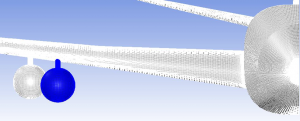RBF Morph took part in the ANSYS Innovation User Conference and Workshop 2019 which was held on May, 22th and 23th in Coventry (UK).
Our work titled “High Performance RBF Mesh Morphing Solutions to Face Typical Aerospace Problems” presents an overview on the feature of RBF Morph and provides a set of examples of application examples of aerospace interest. The presentation involves large computational domains. Details on the solver performance for several types of cases and of several dimensions in HPC environments are also examined.
There are several advantages in approaching the parameterization of discretized numerical models adopting mesh morphing techniques. Some of the most important are: the domain does not need to be remeshed, the consistency of the numerical configuration is preserved, there are no requirements of high solid modelling (CAD) knowledges, and the parametric configuration is in general more robust if compared to the CAD/remeshing based approach. The quality of the morphing action is, however, strongly related to the performance of the algorithm adopted. Radial Basis Functions (RBF) are recognized to be an extremely powerful mathematical framework with which to the face the mesh smoothing action. RBF based mesh morphing techniques have been, in fact, object of research for several decades but their adoption in industrial applications was limited, in the past, by the high computational costs. The system of equations that needs to be solved has, in fact, the dimension of the number of source points of the RBF problem leading to a computational requirement that grows with the third power of its dimension.
The first commercial mesh morphing software based of RBF launched to the market is RBF Morph. The software implements innovative and efficient solving algorithms that offer performances that are able to manage large domains with efforts compatible with industrial practical interests. Furthermore it offers, large flexibility in setting up complex problems and provides powerful and efficient tools to implement solutions ranging from shape optimization to steady and unsteady Fluid-Structure Interaction (FSI) analyses.
Click here to download the presentation.



